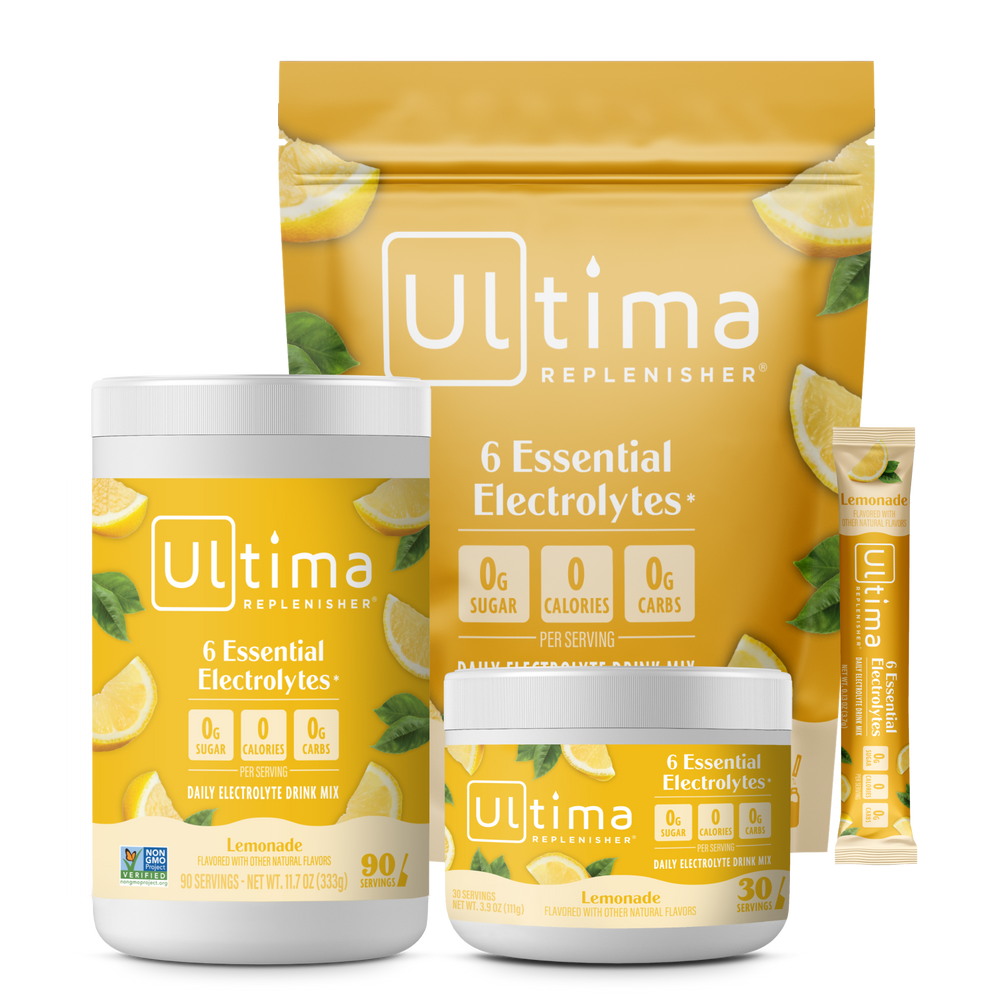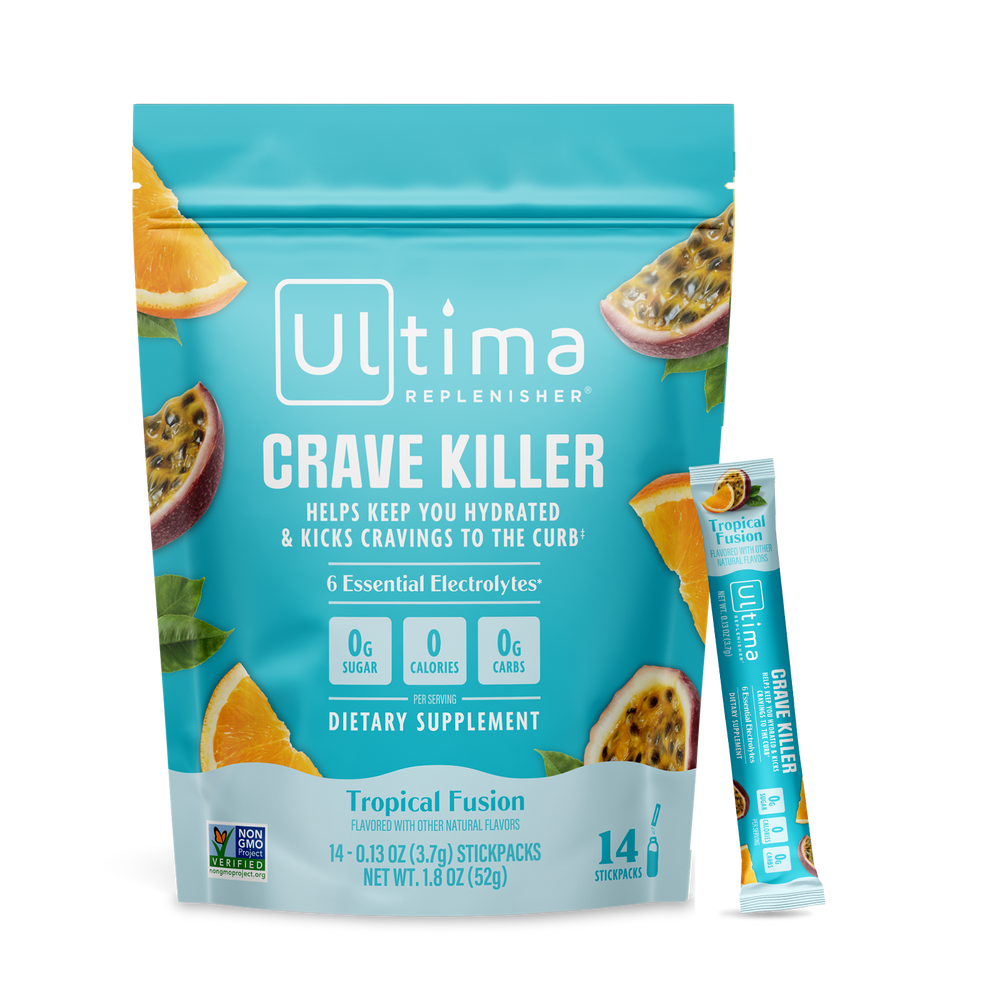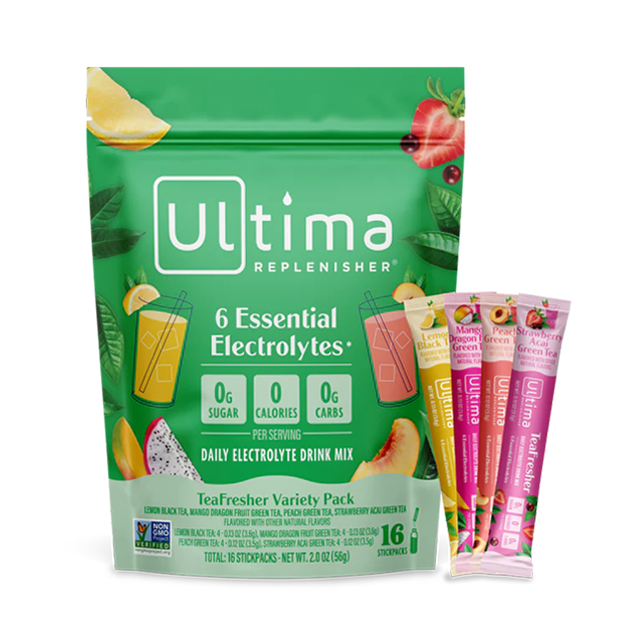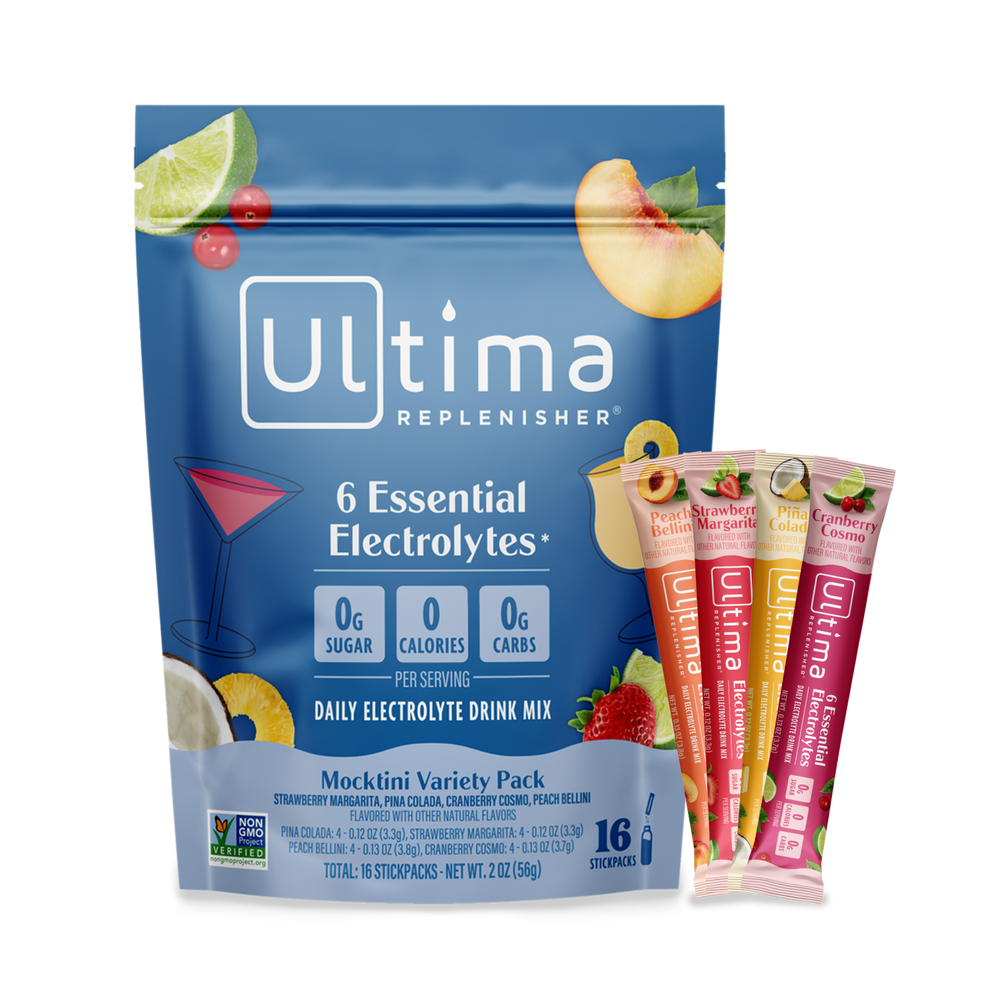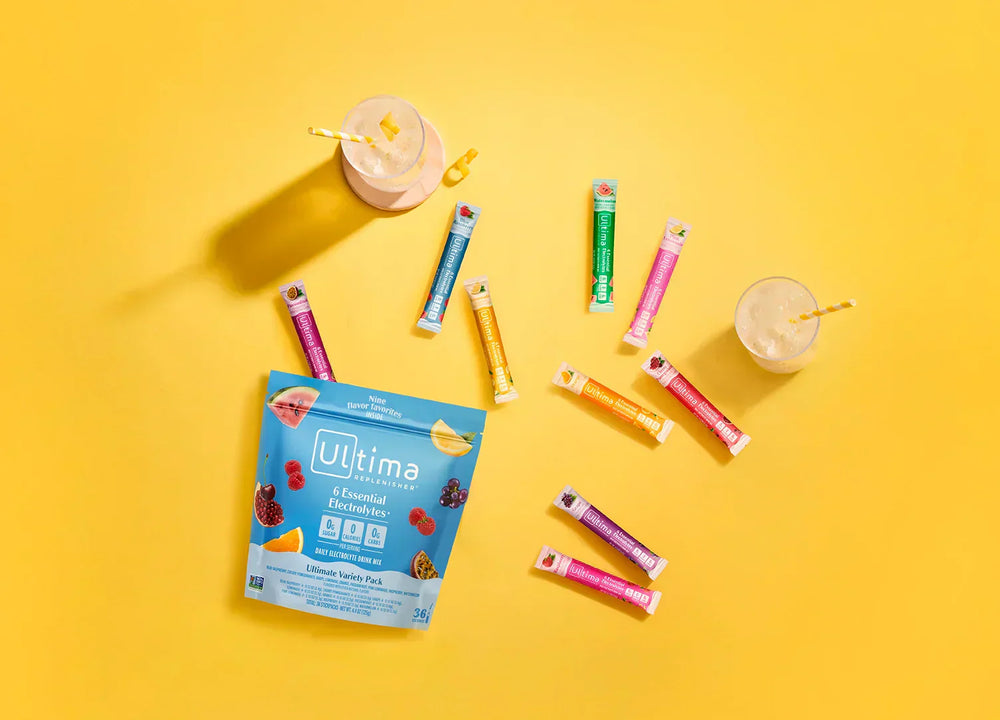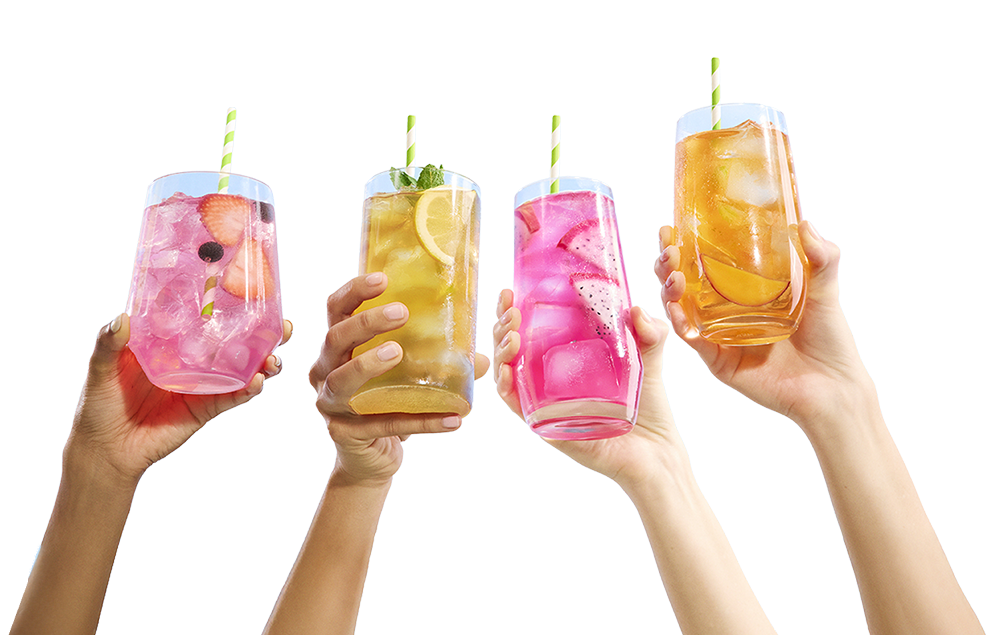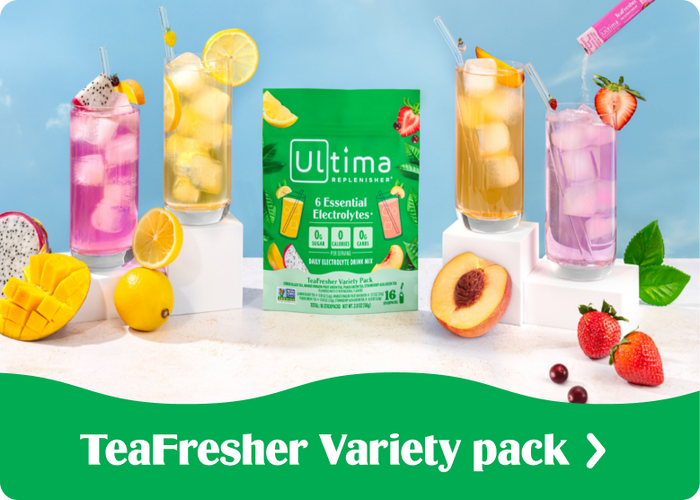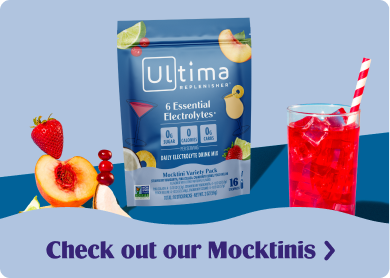
8 Tips to Replenish Electrolytes on a Ketogenic Diet
Since many of us typically get the daily electrolytes our body needs through carbohydrate-rich foods, when you switch to a low-carb diet such as the ketogenic diet, you need to find other sources of these vital minerals.
The key is to approach electrolyte replenishment in a holistic or well-rounded way. In other words, you don’t just want one new source of electrolytes—you want to find ways to incorporate sodium, potassium, calcium, magnesium, phosphorus and chloride throughout your daily intake of food and drinks.
8 Ways to Incorporate Electrolytes into Your Keto Diet
1. Add Salt to Your Food
Salt is essentially sodium chloride—two electrolyte minerals your body needs to function properly. Sodium, especially, helps you maintain fluid and prevent dehydration. So, adding salt (Himalayan, kosher, sea or table salt) to your foods is a quick and easy way to get more sodium and chloride. Use whichever type of salt you prefer, as they all have relatively the same amount of sodium chloride per serving. While Himalayan salt also contains traces of other electrolytes—potassium and phosphorus—there is not enough to make a significant difference.
On keto, the process of ketosis tends to flush more water and sodium from your body, especially as you first adjust to the diet. While normal dietary guidelines are to consume no more than 2,300 mg of sodium each day, on keto, you may need more—some experts recommend between 2,000 and 4,000 mg a day.
If you have any health conditions, especially high blood pressure, kidney problems, or cardiovascular disease, you should talk to your doctor about what would be best for you. A diet high in sodium is linked to high blood pressure and may increase your risk for stroke, heart failure, osteoporosis, stomach cancer and kidney disease. It’s always good to understand how a new diet plan might affect your personal health risks, so talking to your doctor or nutritionist is recommended.
2. Discover Bone Broth, a Superfood
Not only is bone broth a terrific tool while on keto, it’s a healthy addition to almost any diet plan. Bone broth is a broth made from simmering animal bones and joints (such as beef or chicken) in water. It’s often used as a base for soups and stews, but you can also drink it plain. There are plenty of organic, Keto friendly bone broths available today.
While the nutritional content of different bone broths vary depending on the meats initially used to create it, most bone broths provide electrolytes including sodium, potassium, calcium, magnesium and phosphorus. Because bone broth also provides collagen, which may support healthy hair, nails and joints, you’ll reap other benefits from this superfood too.
3. Think Green—Leafy Greens & Other Greens
Green veggies, especially leafy greens, are nutrient-rich foods that can help replenish your electrolytes on keto. Each one offers a different combination of electrolytes:
- Lettuce (Iceberg and romaine) – Potassium, calcium, magnesium.
- Spinach – Potassium, calcium, magnesium
- Kale – Phosphorus, potassium, calcium
- Bok choy – Calcium, phosphorous, magnesium
- Swiss chard – Potassium, magnesium, calcium, phosphorus
- Collard greens – Potassium, calcium, magnesium
Asparagus, broccoli and zucchini are tasty ways to get more electrolytes too.
4. Forage for Nuts & Seeds
Nuts and seeds are typically rich in magnesium, but can also be good sources of calcium and potassium. You’ll find many in the “fill-it-yourself” aisle of grocery stores. Just be aware that not all nuts and seeds are low-carb—such as cashews and sesame seeds. Keto friendly nuts to incorporate into your diet include: pecans, Brazil nuts, walnuts, macadamia nuts, and almonds. They provide potassium, calcium and magnesium, and some nuts provide phosphorus too.
Hemp seeds, chia seeds and shelled pumpkin seeds are all mineral-rich sources that will help replenish your electrolytes as well. Add them on top of salads, in your smoothies, or eat them as a snack.
5. Get Fishy
Certain fish can help replenish electrolytes as well. On keto, you want fish that are low carb but high in healthy fats and proteins. Salmon definitely fits the bill (wild canned or filets), plus salmon contains potassium, magnesium, calcium, sodium, and phosphorus. Other Keto friendly fish to look for that provide electrolytes include sardines, mackerel, Pacific herring, trout, and even anchovies.
6. Replace Your High-Carb Banana with Low-Carb, High-Fiber Avocado
Not only are avocados considered a “healthy fat” rich in omega-3s and omega-6s, they also contain a wealth of other nutrients including electrolytes potassium and magnesium. These green fruits (yes, avocados are considered fruits) are also high in fiber and antioxidants. If you thought you were going to miss eating bananas as your potassium source, think again. The avocado has you covered!
7. Pick a Protein with Electrolytes—Meat!
While meat is often known as a solid choice for protein, most meats provide electrolyte minerals as well. Chicken, pork, turkey and red meat typically provide potassium, magnesium, sodium and sometimes phosphorus. The nutritional content depends on the type of cut you choose—for example, skirt steak or sirloin (sirloin has more potassium, magnesium and sodium) or pork chop vs. pork loin (pork chop has more calcium, but the loin has more magnesium, potassium and sodium).
One serving of meat may not be enough to fully replenish your electrolytes, but the point is the more well-balanced your meals are overall, the easier it will be to replenish your electrolytes and other minerals and vitamins through the foods you eat. As you can see from these tips so far, you have a lot of foods from which to choose!
8. Choose Zero-Carb, Sugar-Free Electrolyte Drinks
An electrolyte supplement is also a good idea when following keto, especially if you’re new to the plan and still adjusting. Plus, they can be a great way to get the required water you need, particularly if you were not much of a water drinker beforehand.
Ultima Replenisher® sugar-free electrolyte mixes make staying hydrated easy with a ton of delicious flavors (like Cherry Pomegranate and Watermelon) based on real fruit extracts. We’ve even made it easy to find creative ways to work zero-carb electrolytes into cocktails, mocktails, smoothies and more! Bookmark our Recipes page for all sorts of ideas.
Signs You’re Not Getting Enough Electrolytes on Keto
If you’re not getting enough electrolytes, your body will alert you. You may notice you’re more irritable, have headaches more often, or feel like your brain isn’t quite as quick or clear as it normally is. You may feel more tired than usual, lightheaded, or experience muscle cramps out of the blue. These are signs of dehydration and an electrolyte imbalance.
If you start feeling these symptoms, reach for a glass of water—even better, add a Keto friendly hydration powder to boost the flavor and function. Carry individual electrolyte powder stickpacks with you so you can always add electrolytes even on the go!
Then, go back through all these tips and make sure you’re getting an array of the above foods to cover all the electrolytes you need.
